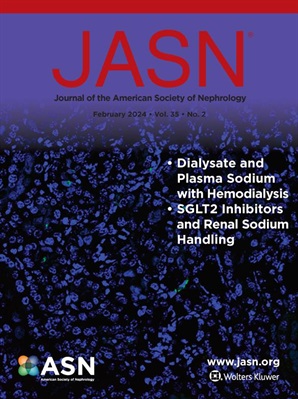急性肾损伤风险分类机器学习模型的系统评价和荟萃分析。
IF 9.4
1区 医学
Q1 UROLOGY & NEPHROLOGY
Journal of The American Society of Nephrology
Pub Date : 2025-10-01
Epub Date: 2025-03-28
DOI:10.1681/ASN.0000000702
引用次数: 0
摘要
背景:人工智能(AI)通过机器学习(ML)模型似乎可以在某些临床环境中提供准确和精确的急性肾损伤(AKI)风险分类,但其在真实世界环境中的表现和实施尚未得到证实:方法:检索了截至 2023 年 8 月的 PubMed、EMBASE、Web of Science 和 Scopus。使用与 AKI、AI 和 ML 相关的文本词检索了报道经外部验证的预测住院成人和儿童患者 AKI 发病、AKI 严重程度和 AKI 后并发症的模型的文章。两名独立审稿人筛选了文章标题、摘要和全文。使用接收者操作特征曲线下面积(AUC)比较模型的区分度,并使用随机效应模型进行汇总:在初步确定和筛选的 4816 篇文章中,95 篇被纳入,代表了 380 万例入院患者。KDIGO-AKI标准是最常用的AKI定义标准(72%)。我们确定了 302 个模型,其中最常见的是逻辑回归(37%)、神经网络(10%)、随机森林(9%)和 XGBoost(9%)。报告最多的住院AKI事件预测因素是年龄、性别、糖尿病、血清肌酐和血红蛋白。内部和外部验证的 AKI 发病集合 AUC 分别为 0.82(95% CI,0.80-0.84)和 0.78(95% CI,0.76-0.80)。在多种临床环境、AKI 严重程度和 AKI 后并发症中,内部验证的汇总 AUC 为 0.78 至 0.87,外部验证为 0.73 至 0.84。虽然数据有限,但儿科人群的结果与在成人中观察到的结果一致。所有结果的研究间异质性都很高(I2>90%),根据预测模型偏倚风险评估工具(Prediction model Risk Of Bias ASsessment Tool),大多数研究的偏倚风险都很高(86%):大多数外部验证模型在预测成人和儿童住院患者的 AKI 发病、AKI 严重程度和 AKI 后并发症方面表现良好。然而,临床环境、研究人群和预测因素的异质性限制了这些模型的通用性和在床旁的应用。本文章由计算机程序翻译,如有差异,请以英文原文为准。
Systematic Review and Meta-Analysis of Machine Learning Models for Acute Kidney Injury Risk Classification.
求助全文
通过发布文献求助,成功后即可免费获取论文全文。
去求助
来源期刊
CiteScore
22.40
自引率
2.90%
发文量
492
审稿时长
3-8 weeks
期刊介绍:
The Journal of the American Society of Nephrology (JASN) stands as the preeminent kidney journal globally, offering an exceptional synthesis of cutting-edge basic research, clinical epidemiology, meta-analysis, and relevant editorial content. Representing a comprehensive resource, JASN encompasses clinical research, editorials distilling key findings, perspectives, and timely reviews.
Editorials are skillfully crafted to elucidate the essential insights of the parent article, while JASN actively encourages the submission of Letters to the Editor discussing recently published articles. The reviews featured in JASN are consistently erudite and comprehensive, providing thorough coverage of respective fields. Since its inception in July 1990, JASN has been a monthly publication.
JASN publishes original research reports and editorial content across a spectrum of basic and clinical science relevant to the broad discipline of nephrology. Topics covered include renal cell biology, developmental biology of the kidney, genetics of kidney disease, cell and transport physiology, hemodynamics and vascular regulation, mechanisms of blood pressure regulation, renal immunology, kidney pathology, pathophysiology of kidney diseases, nephrolithiasis, clinical nephrology (including dialysis and transplantation), and hypertension. Furthermore, articles addressing healthcare policy and care delivery issues relevant to nephrology are warmly welcomed.

 求助内容:
求助内容: 应助结果提醒方式:
应助结果提醒方式:


